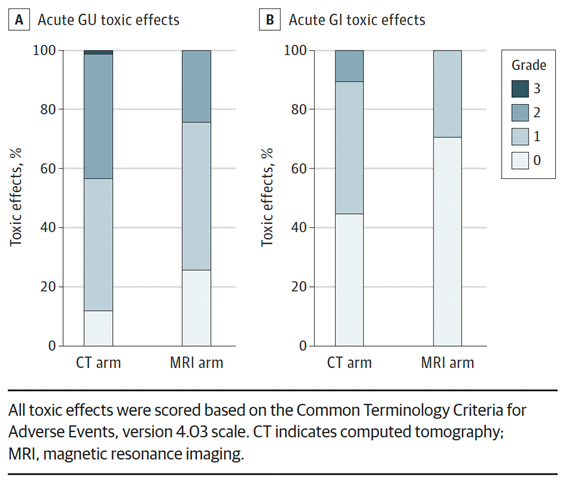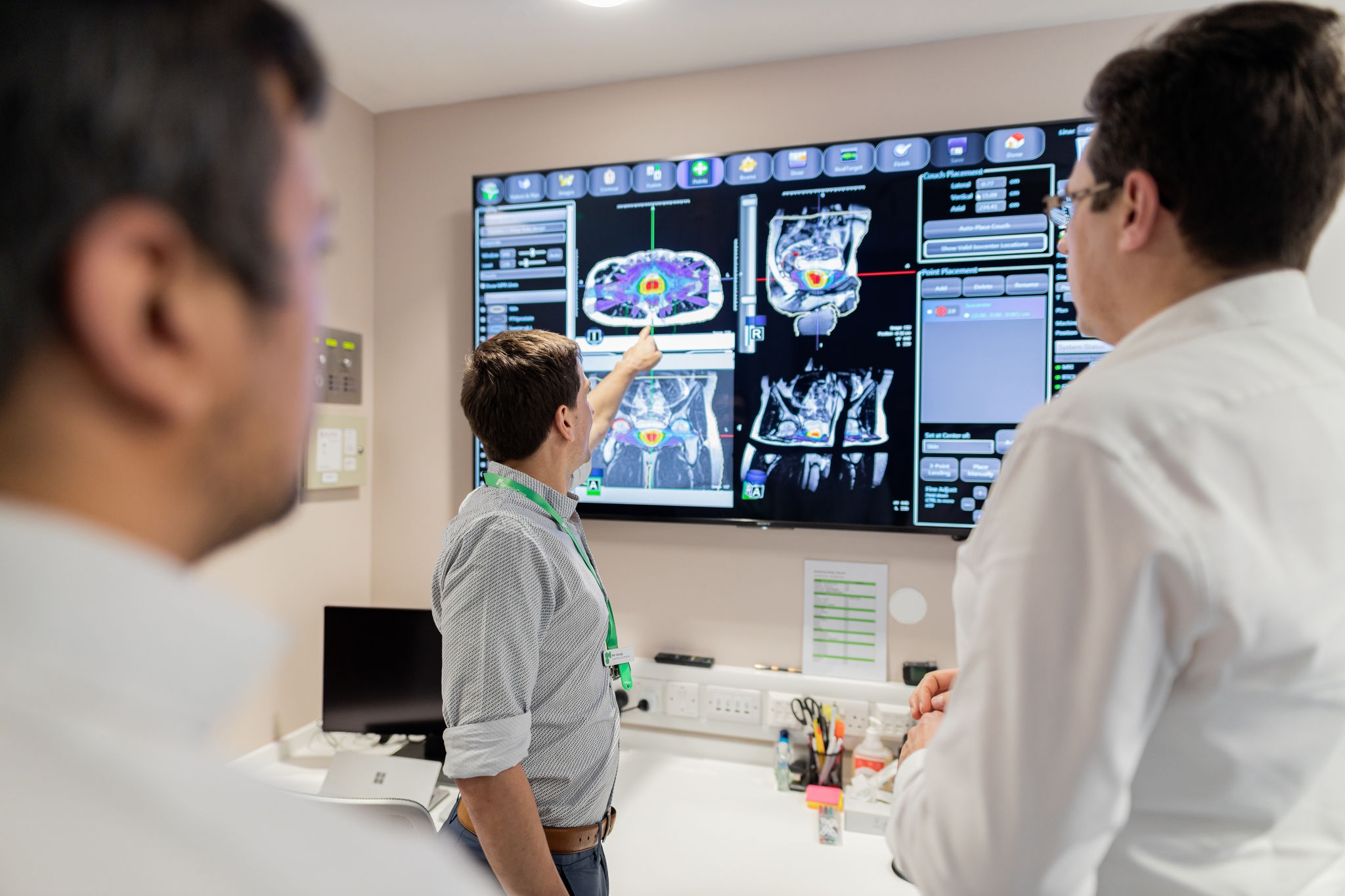MIRAGE Phase III Randomized Clinical Trial
2 min read
Background
Magnetic resonance imaging (MRI) guidance offers several benefits when used alongside stereotactic ablative radiotherapy (SABR) in the treatment of prostate cancer. However, these are yet to be proven in a randomized clinical trial. The objective of this study was to highlight these benefits by comparing an MRI-guided treatment with a CT-guided treatment in patients receiving the same dose of radiation via SABR.
Summary of study
Study type1
Non-blinded, single-centre, phase 3 randomized clinical trial
Location
The study was conducted at the University of California, Los Angeles
Patients
156 patients aged 18 years or older receiving SABR to treat clinically localized prostate adenocarcinoma were randomized: 77 to the CT arm (median age – 71 years) and 79 to the MRI arm (median age – 71 years).
A prespecified interim futility analysis was conducted after 100 patients reached ≥ 90 days since SABR was first performed.
A revised power calculation following this analysis concluded that a conditional power of 89% could be maintained with a re-estimated sample size of 154 patients.
Therefore, despite originally being designed to recruit 300 patients, the MIRAGE trial was closed to accrual early; the 156 patients that had already been treated up to that point were included in the evaluation.
Treatment
Patients were randomly assigned (1:1) to receive either CT-guided SABR or MRI-guided SABR.
Planning margins of 4mm (CT-guided) and 2 mm (MRI-guided) were used to deliver a radiation dose of 40 Gy in 5 fractions (5#).
Rectal spacers (44% of patients across both arms) and elective nodal radiotherapy were used at the physician’s discretion.
Follow-up
Study follow-up from the start of treatment to 90 days. Follow-up over the long term will confirm if notable benefits persist.
Key findings
- Acute grade ≥ 2 genitourinary (GU) toxicity was significantly reduced in men receiving MRI-guided SABR (43.4% vs. 24.4%, p = 0.01)
- Acute grade ≥ 2 gastrointestinal (GI) toxicity was significantly reduced in men receiving MRI-guided SABR (0.0% vs. 10.5%, p = 0.003)
- IPSS scores showed patients receiving MRI-guided SABR had less toxicity and recovered more quickly
- EPIC-26 bowel domain scores showed patients receiving MRI-guided SABR had less bowel upset and recovered more quickly

Figure 1: Rates of Acute Genitourinary (GI) and Gastrointestinal (GU) Toxic Effects
Implications
- MRI-guided SABR offers a significant reduction in acute moderate physician-scored genitourinary and gastrointestinal toxic effects
- MRI-guided SABR also provides a significant reduction in patient-reported symptoms related to urinary and bowel function
- A longer-term follow-up will be required to determine whether these notable benefits persist
The MIRAGE Phase III trial demonstrates that using an MRI-guided SABR treatment offers fewer side effects and improved quality of life for patients with prostate cancer over a CT-guided approach.
Read the full study here.
Reference
- Kishan A. et al., Magnetic Resonance Imaging-Guided vs Computed Tomography-Guided Stereotactic Body Radiotherapy for Prostate Cancer: The MIRAGE Randomized Clinical Trial. JAMA Oncol. 12 Jan 2023. doi: 10.1001/jamaoncol.2022.6558.
